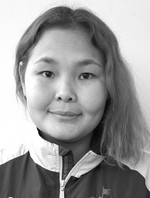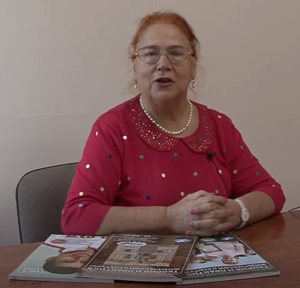Evaluation of functional status of judokas aged 14-16 years to predict success in competitive activity
Фотографии:
ˑ:
Fizicheskaya kultura: vospitanie, obrazovanie, trenirovka №6 2016,
L.V. Pertseva1
M.P. Danilova2
PhD V.G .Torgovkin1
1Institute of Physical Culture and Sports of M.K. Ammosov NEFU, Yakutsk
2 Children and Youth Sport School № 2, Yakutsk
The paper presents a special fitness test applied in judo (SJFT) which is the most popular diagnostic test abroad. It is used in the conditions of strenuous work. SJFT results are supposed to be useful for trainers when evaluting athlete's functional capacities.
JMG test is the second most widely used test, - the athlete performs three exercises for 1 minute each (a total of 3 minutes). The test is meant to measure judoka's functional capacities.
Keywords: specific tests, judo, functional state.
References
- Azevedo P.H.S.M. Determination of judo endurance performance using the Uchi-Komi technique and an adapted lactate minimum test / P.H.S.M. Azevedo, A.D. Drigo, M.C.G.A. Karvalho et al. // J. Sports Sci Med. – 2007. – № 6. – P. 10-14.
- Almansba R. An Uchi-komi with load, a physiological approach of new special judo test proposal / R. Almansba, E. Franchini, S. Sterkowicz // Science & Sports. – 2007. – № 22 (5). – P. 216-223.
- Garcia Jose Manuel. Test J.M.G. Judo-info online demo / Jose Manuel Garcia. – 1999. – P. 1-4.
- Degotte F. Energy demands during a judo match and recovery. Judo Sports / F. Degotte, P. Dzhounel, E. Filiare // Sports Medicine. – 2003. – № 37 (3). 245-9.
- Detaniko D. Relationship of aerobic and neuromuscular indexes with specific actions in judo / D. Detaniko, J. Dal Pupo, E. E. Franchini, S.G. dos Santos // Science & Sports. – 2012. – № 27 (1). – P. 16-22.
- Detaniko D. Spetsificheskie otsenki v dzyudo: obzor metodov (Specific assessment in judo: review of methods) / Detaniko D., S.G. dos Santos // Brazilian journal of kinoanthropometry. – 2012. – № 14 (6). – P. 738-748.
- Drid P. Special Judo Fitness Test - a review / P. Drid, T. Trivic, S. Tabakov // Serb. J. Sports Sci. – 2012. – № 6(4). – P. 117-125.
- Carter G. Somatotyping - development and applications. Cambridge studies in biological anthropology / J. Carter, B.H. Heath. – Cambridge – New-York Port Chester, Melbourne, Sydney: Cambridge University Press, 1990. – 285 p.
- Castarlenas D.L. Izuchenie kratkovremennykh poedinkov v sorevnovaniyakh po dzyudo (Study of short fights in judo contests) / D.L. Castarlenas, A. Planas // Journal of General Education. – 1997. – № 1 (47): 32-9.
- Santos L. A new individual and specific test to determine the aerobic-anaerobic transition zone (Santos Test) in competitive judokas / L. Santos, V. Gonzales, M. Iscar et al. // Sila Kond Res. – 2010. – № 24(9). – P. 2419-2428.
- Sterkowicz S. Levels of anaerobic and aerobic capacity indices and results for the special fitness test in judo competitors / S. Sterkowicz, A. Zuchowicz, R. Kubica // Hum Kinet. – 1999. – № 2(1). – P. 115-135.
- Franchini E. Effects of recovery type after a judo match on blood lactate and performance in specific and non-specific judo tasks / E. Franchini, R. Bertuzzi, M. Takito et al. // European Journal of Applied Physiology. – 2009. – № 107 (4): 377-83.
- Franchini E. Physiological profiles of elite judo athletes / E. Franchini, Del Vecchio, K.A. Matsushigue, G.G. Artioli // Sports Medicine. – 2011. – № 41 (2). – P. 147-66.
- Franchini E. Energy system contributions to the special judo fitness test / E. Franchini, S. Strekowicz, U. Szmatlan-Gabrys et al. // Sportivnaya fiziologiya. – 2011. – № 6(3). – P. 334-343.
05.11.2016 г.




